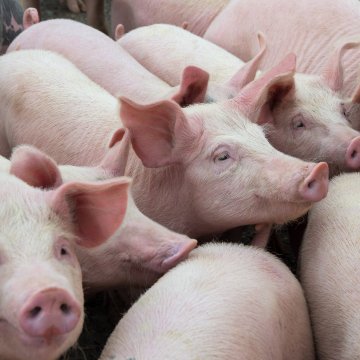Content ID
Farmers await testing on PRRS resistant hogs

Porcine Reproductive and Respiratory Syndrome (PRRS) is a devastating disease.
First detected in the U.S. in 1987, it now costs North American farmers more than $600 million annually.
Pigs that contract the disease exhibit an inability to conceive, increased late term abortions, premature farrowing, stillborn pigs, and weak piglets which often die prior to weaning or show slow growth and development. The virus is airborne and can be passed down from sow to pigs.
Except for mallard ducks, PRRS virus only infects swine. It poses no threat to humans or other animals, and in no way makes eating pork a threat to human health.
There is no cure. Vaccination, especially modified live vaccines, can control clinical signs and reduce virus shedding.
Broad-spectrum antibiotics and anti-inflammatories can help control secondary infections and symptoms.
For some farmers, the only way to rid their operation of the virus is to cull the herd, then wait several months to restock.
Variants differ from region to region. All sizes of hog farms are affected.
- READ MORE: How to properly evaluate sow condition
Turning to science
New hope arrived in 2016 when Genus PIC partnered with researchers from the University of Missouri and Kansas State University. They were able to breed pigs that were resistant to the disease.
Genus is a British-based business selling elite genetics worldwide. PIC, which stands for Pig Improvement Company, is Genus’ swine division.
As the industry turned attention toward not just treatment, but prevention of the disease, Genus PIC began to look to genetic solutions. The search led to Randall Prather, PhD, at the Animal Sciences Research Center, University of Missouri.
Prather and his team discovered a protein called CD163 located on a gene in pigs with PRRS. For the PRRS virus to enter cells, it must first attach to this protein.
Using gene editing technology, researchers were able to get rid of the protein on the cell surface. As Prather explains, the virus doesn’t have anything to recognize, and therefore, can't attach to anything.
The first attempt astonished even the researchers, who were able to breed a litter of pigs that did not produce the protein. The pigs did not get sick and continued to gain weight normally.
Scientists also observed no other changes in their development compared to pigs that produced the protein.
It is crucial that the process not only alleviate the suffering of hogs from the virus, but that the process not affect meat safety and quality.
The waiting game
Taking this discovery from the lab to commercial application is a long process, involving years of testing through multiple generations of pigs.
It takes four generations, with a generational interval of at least one year, to work through the conventional pig breeding and production process: nucleus, multiplier, commercial, and harvest.
Add to that, the screening of large populations in different environments and under different stress conditions.
PIC owns more than 10 elite pure-bred lines, housed in strategically located bio-secure facilities. These pigs are bred out into breeding herds at more than 500 predominantly sub-contracted farms around the world, creating a DNA database of more than 20 million animals.
Commercialization of the technology is still at least a few years away; research needs to continue looking for unintended consequences, such as changes in meat and animal health and wellbeing, as well as the heritability and stability of the gene editing.
In the meantime, Genus PIC and others involved in the research must deal with the societal challenges of introducing new technologies, and work their way through the food safety regulatory process. In 2021, Genus PIC joined forces with The Roslin Institute at the University of Edinburgh, Scotland, to continue testing multiple generations of pigs and conduct the studies required for FDA approval.
For producers, it could be worth the wait. As Prather notes, “This will have tremendous impact on the welfare of animals, the sustainability of agriculture, and help the bottom line as well.”
Tip of the Day
When you mow in a remote area




